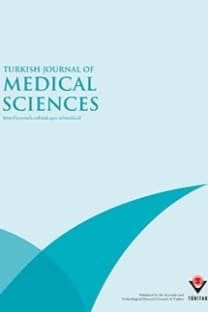The role of FDG PET/CT in detection of distant metastasis in theinitial staging of breast cancer
FDG PET/CT, breast cancer, distant metastasis,
- ISSN: 1300-0144
- Yayın Aralığı: 6
- Yayıncı: TÜBİTAK
Cem ARITÜRK, Meltem AÇIL, Halim ULUGÖL, Zehra Serpil Ustalar ÖZGEN, Eyüp Murat ÖKTEN, Sinan DAĞDELEN, Eşref Hasan KARABULUT, HÜSEYİN CEM ALHAN, Fevzi TORAMAN
Fevzi TORAMAN, Halim ULUGÖL, Zehra Serpil USTALAR ÖZGEN, Cem ARITÜRK, Meltem AÇIL, Eyüp Murat ÖKTEN, Hüseyin Cem ALHAN, Sinan DAĞDELEN, Eşref Hasan KARABULUT
Bülent AYDINLI, Gürkan ÖZTÜRK, Sabri Selçuk ATAMANALP, Bünyami ÖZOĞUL, Şükrü ARSLAN, Ercan KORKUT, Abdullah KISAOĞLU, Abdulmecit KANTARCI, Rüstem Berhan PİRİMOĞLU, Mehmet İlhan YILDIRGAN, Nurhak AKSUNGUR
Naseer BABA, Rajinder RAINA, Pawan VERMA, Mudasir SULTANA
Ali Timuçin ATAYOĞLU, MELTEM SOYLU, SİBEL SİLİCİ, NERİMAN İNANÇ
BERRİN OKKA, YASEMİN DURDURAN, Neslihan Değerli KODAZ
Anar ALIYEV, Sabire Yilmaz AKSOY, Meftune ÖZHAN, Özgül EKMEKÇİOĞLU, Betül VATANKULU, Pinar Çiğdem KOCAEL, Muhammet Sait SAĞER, Melih Engin ERKAN, Kerim SÖNMEZOĞLU, Metin HALAÇ
The protective effect of Capparis ovata in acute hepatotoxicity induced by paracetamol
Tuğba KOCA, Mustafa AKÇAM, Meltem ÖZGÖÇMEN, Nurcan DOGAN, Duygu KUMBUL DOĞUÇ
Levent DALAR, Seda Tural ÖNÜR, Cengiz ÖZDEMİR, Sinem Nedime SÖKÜCÜ, Ahmet Levent KARASULU, Sedat ALTIN
Mustafa SÜREN, İsmail OKAN, Ziya KAYA, Serkan KARAMAN, Semih ARICI, Mevlüt ÇÖMLEKÇİ, Murat AYAN, Mehmet ESEN, Serkan DOĞRU, Aynur ŞAHİN, Tuğba KARAMAN
